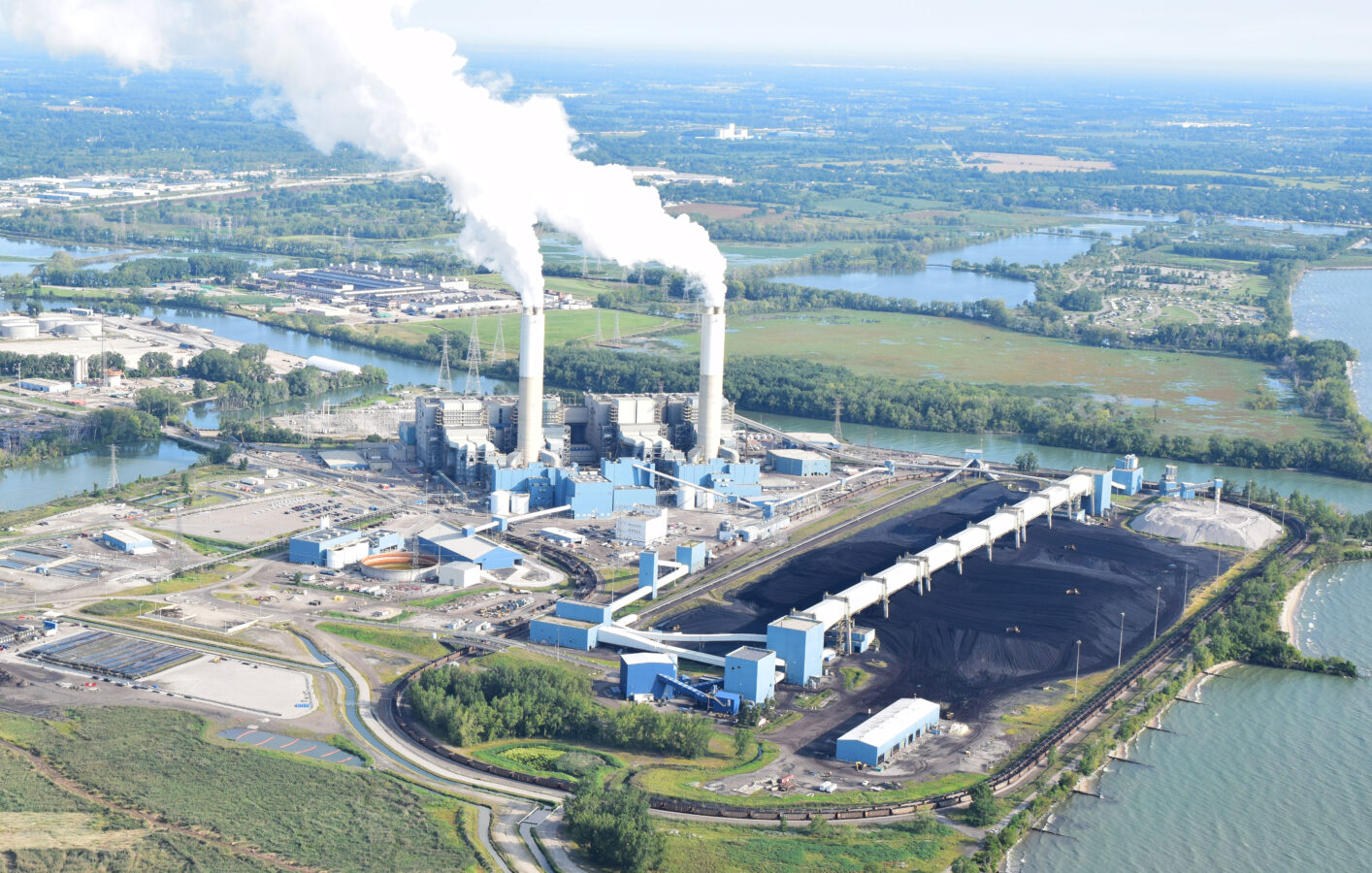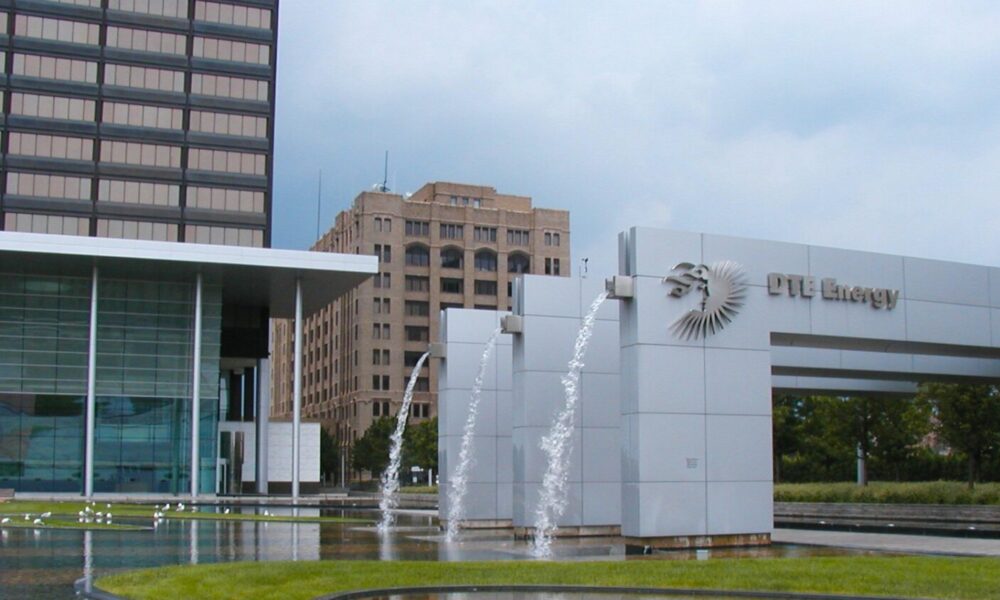This month, the Michigan Public Service Commission (MPSC) is holding a public hearing on DTE Energy’s plans for Michigan’s energy future.
DTE’s proposal, known as an integrated resource plan, describes how the utility intends to fulfill its customers’ electricity needs over the next 20 years. These types of long-term energy plans include forecasting the amount of electricity customers will need and examining different options for supporting that need.
This public hearing is an opportunity to learn more about DTE’s proposed plan and for ratepayers, communities, and other stakeholders to share input with the commission. The hearing will be held virtually on December 12, and instructions for joining and making comments can be found here.
What are integrated resource plans and why do they matter?
The choices utilities make in long-term energy plans affect customer bills, public health, and the state’s progress in meeting its goals to reduce heat-trapping emissions.
For example, investing in energy efficiency and programs that compensate customers for reducing their electricity usage at certain times (known as demand response) cuts pollution and lowers residential and commercial electric bills. Integrated resource plans determine how much efficiency and demand response utilities intend to pursue in the future.
Additionally, long-term energy plans consider how utilities will operate their existing power generating facilities and what type of new facilities they might build and when. Key questions include how long the utilities will continue to run polluting coal and fossil gas plants and how quickly they will add clean energy resources such as solar and wind to the system.
Earlier this year, the MPSC approved a settlement agreement on Consumers Energy’s integrated resource plan that commits the company to retire all its remaining coal-fired power plants by 2025, construct no new fossil gas infrastructure, and build large amounts of new solar power between now and 2040.
What’s in DTE’s proposed plan?
DTE’s goal is to reach “net-zero” emissions by 2050 while reducing its carbon emissions from 2005 levels 65 percent by 2028, 85 percent by 2035, and 90 percent by 2040. In its long-term energy plan, DTE proposes a pathway for achieving these carbon pollution reduction goals while continuing to provide sufficient, cost-effective resources that meet customer needs.
Retiring the Monroe coal plant: DTE’s coal plant in Monroe, Michigan, is one of the largest in the Midwest and the third-highest emitter of power sector carbon pollution in the entire country. In its previous energy plan, which the MPSC approved in 2020, DTE planned to operate Monroe until 2040. Under its new proposal, DTE would commit to a faster, phased retirement schedule that would retire half of Monroe’s generating capacity in 2028 and close the remainder in 2035. While this is a significant improvement, DTE still falls short of the MI Healthy Climate Plan’s target for the state to be coal-free by 2030.

Converting the Belle River plant: DTE proposes to switch its Belle River plant from coal to fossil gas fuel in 2025 and 2026, saying that the plant would run only in limited amounts following the transition but could be kept in operation until 2040. DTE asserts that it needs Belle River to achieve the partial retirement of Monroe in 2028. The Union of Concerned Scientists (UCS), along with our coalition partners and experts, will be looking for cleaner, less risky alternatives to running Belle River on fossil gas, alternatives that could get DTE off of coal sooner and save ratepayers money.
Investing in renewable and battery storage: Under DTE’s proposed plan, the company would add 15,400 megawatts (MW) of new solar and wind power by 2042, which it says is enough to power approximately 4 million homes. (DTE currently has 3,000 MW of existing and approved solar and wind resources.) DTE also would install nearly 2,000 MW of battery resources by 2042. These are significant investments, but the MPSC must examine whether the company can and should add additional amounts of these clean energy resources sooner to hasten coal plant retirements and avoid new fossil gas infrastructure.
Here’s a breakdown of DTE’s proposal to add solar, wind and batteries in the first five years, second five years, and last 10 years of its 20-year plan:

The federal Inflation Reduction Act, signed into law in August, contains game-changing new incentives for energy storage batteries and renewables such as solar and wind. DTE was already far along in preparing its long-term energy plan when the law passed. Accordingly, the MPSC must ensure that the company properly analyzed speeding up its deployment of clean energy resources to ensure new benefits for ratepayers and the environment. An analysis by UCS and the Michigan Environmental Justice Coalition found that meeting a 100 percent renewable energy standard by 2035 is feasible and would provide tremendous benefits for the state.
Finally, DTE remains an obstacle to expanding customer-owned resources such as rooftop solar. Communities want and need DTE to be a better partner when it comes to enabling local choice and consumer control over energy resources. Stakeholders should insist the company’s long-term energy plans recognize the potential for local “distributed” energy resources as a viable option alongside larger utility-owned facilities.
Environmental justice analysis: DTE’s energy plan includes an assessment of environmental justice that utilized US Environmental Protection Agency screening and mapping tools to evaluate its facilities’ air pollution and health impacts. This is a step in the right direction, but utilities and the MPSC must do more to prioritize public health, access to clean energy benefits, and influence in decision-making for overburdened communities.
Smaller amounts of efficiency: Unfortunately, DTE is targeting only a 1.5 percent average annual savings from its energy efficiency programs despite the fact that it achieved 2 percent savings in 2021 and is on track to do the same in 2022. DTE also is projecting only incremental improvement in demand response programs, which provide financial incentives to customers who can reduce or shift energy their use during times of high demand.
What’s next for Michigan stakeholders?
Stakeholders, including residents and business owners, have an opportunity to voice their opinions on DTE’s integrated resource plan at the virtual public hearing on December 12. Additionally, anyone can weigh in on Michigan’s clean energy future by submitting a public comment at any time while the docket is open. (See this notice for more details on how to submit.) The public hearing is the beginning of a process expected to take about a year, with an MPSC decision expected in the fall of 2023.
Join us in supporting a clean energy future and the goal of phasing out coal plants with solar, wind, energy efficiency and other clean energy technologies. Together, let’s urge Michigan regulators to ensure that DTE pursues the cleanest, least risky, and most cost-effective resources to achieve the long-term goals that the state and its residents need and deserve.

